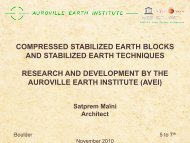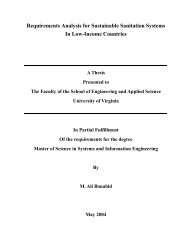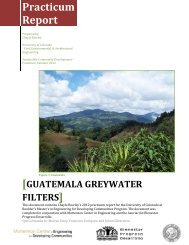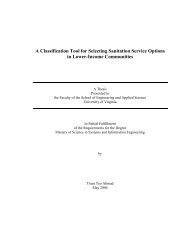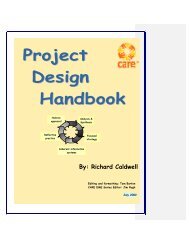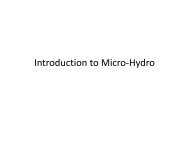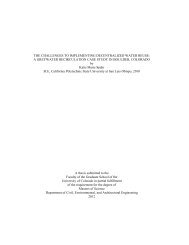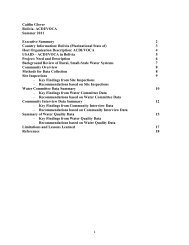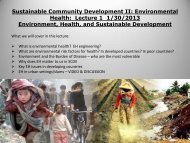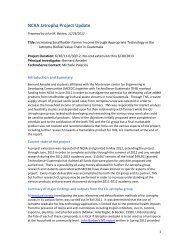SCEBs - University of Colorado Boulder
SCEBs - University of Colorado Boulder
SCEBs - University of Colorado Boulder
You also want an ePaper? Increase the reach of your titles
YUMPU automatically turns print PDFs into web optimized ePapers that Google loves.
The large blocks produced were kept undisturbed in a controlled environment<br />
during the curing phase. The blocks were observed 2-3 times per week during this time.<br />
No detrimental effects due to shrinking/swelling, such as cracking, were observed. The<br />
following photos displayed in Figures 4.15 & 4.16 were taken <strong>of</strong> the blocks made from<br />
Soil #11 after production.<br />
Figure 4.15: UMU Large Blocks<br />
4.2.2.4. UCS and MOR Testing<br />
Figure 4.16: UMU Large Blocks<br />
The large blocks were tested after a 28-day minimum curing period. A 110 kip<br />
capacity MTS load frame was used to perform the necessary compression and three-point<br />
bending tests. The test set-up used for each test is displayed in Section 3.9 (Figures 3.13<br />
& 3.14). The load applied at the block‟s yield point was recorded as the force at failure.<br />
The force and displacement data recorded by the MTS machine were used to develop<br />
stress-strain curves (see Figure 4.17 as an example). Given the fundamental assumptions<br />
<strong>of</strong> traditional mechanical properties <strong>of</strong> materials theory (i.e. the sampled material is a<br />
homogenous, isotropic, linearly elastic material), the slope <strong>of</strong> the linear portion <strong>of</strong> each<br />
stress-strain curve represents the block‟s Young‟s Modulus – E (Modulus <strong>of</strong> Elasticity).<br />
The Young‟s Modulus is <strong>of</strong>ten used in design calculations to estimate a wall unit‟s<br />
49



